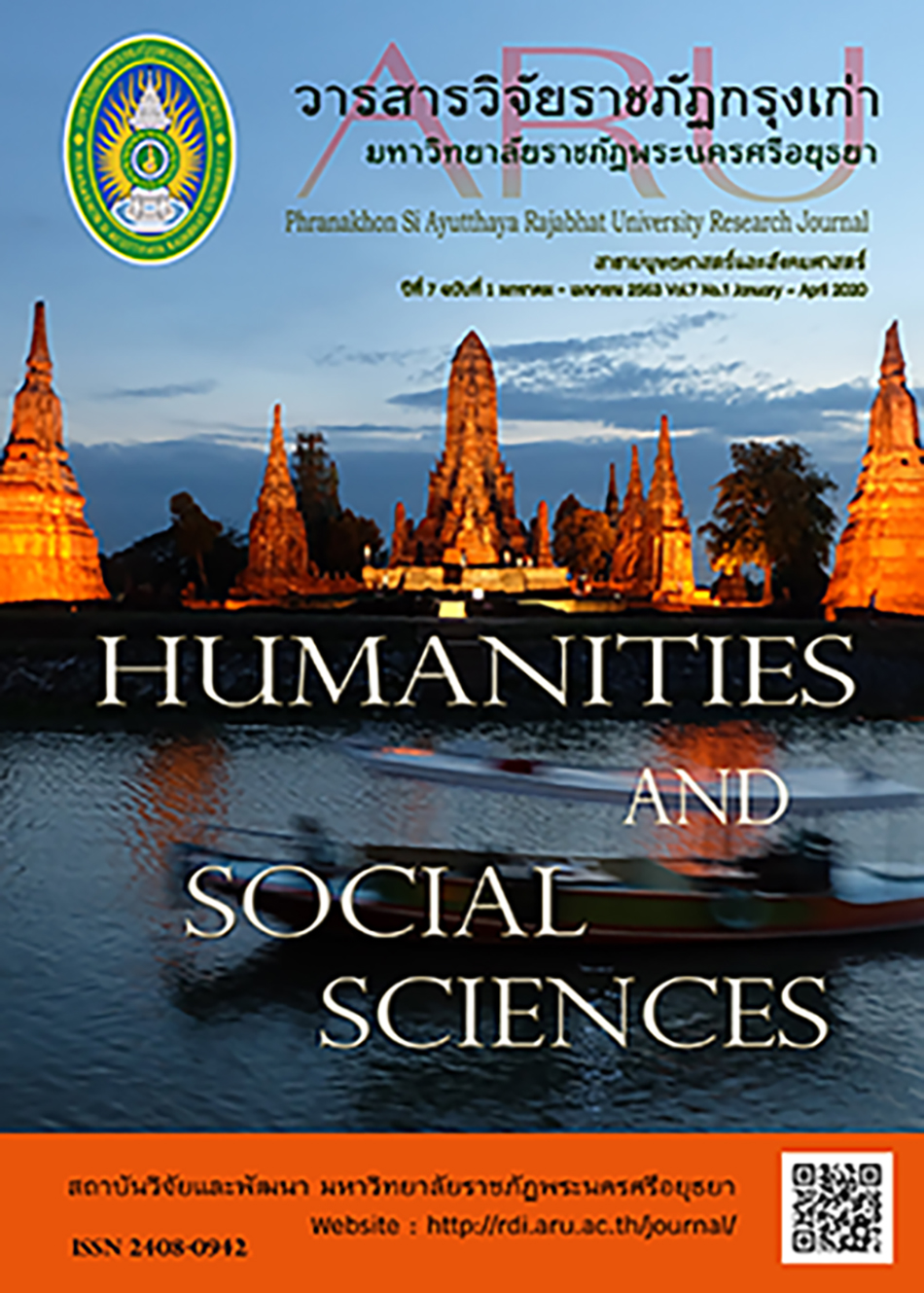Factors Affecting Employee Retention at Tira Thai Public Company Limited, Samut Prakan, Thailand
Main Article Content
บทคัดย่อ
This research is about factors affecting employee retention at Tira Thai Public Company Limited, Samut Prakan, Thailand. This study aims to study the level of employee retention at TRT and to study the important factors affecting employee retention at TRT. There are 495 population in this research from TRT located in Samut Prakan, Thailand. There were 300 participants used as a sampling group and were selected by using a stratified random sampling technique. Participants from each department were randomly selected by using simple random sampling technique. The statistical analysis used multiple regression and descriptive statistic. The result shows that the level of employee retention at TRT is in high level. At the same time, there are three factors affecting employee retention, namely, employee relation, job compensation, employee training and professional development. Work environment and leadership were not affect employee retention.
Article Details
อยู่ระหว่างการปรับปรุง (ลิขสิทธิ์และการรับผิดชอบ)
เอกสารอ้างอิง
commitment: The missing link-The company that enhances compensation conditions and practices will likely see an improvement in employee commitment’, Ivey Business Journal, 65(3), pp.70-73, 2001.
Gharib, M. N., Kahwaji, A. T., & Elrasheed, M. O, “Factors affecting staff retention strategies used in private Syrian companies during the crisis”, International Review of Management and Marketing, 7(2), pp. 202-206, 2017.
Das, B. L., & Baruah, M, Employee retention: A review of literature’,. Journal of Business and Management, 14(2), pp.8-16, 2013.
Khan, A. S., Khan, S., Nawaz, A., & Qureshi, Q. A, “Theories of job satisfaction: Global applications and limitations”, Gomal University Journal of Research, 26(2), pp.45-62, 2010.
Long, C. S., Perumal, P., & Ajagbe, A. M , “The impact of human resource management practices on employees’ turnover intention: A conceptual model”, Interdisciplinary Journal of Contemporary Research in Business, 4(2), pp.629-641, 2012.
Kossivi, B., Xu, M., & Kalgora, B, “Study on determining factors of employee retention”, Open Journal of Social Sciences, 4(05),pp. 261, 2016.
Hair Jr., J. F., Black, W. C., Babin, B. J., & Anderson, R. E. Multivariate Data Analysis. The United States of America: Pearson, 2014.
Edmonds W. A. & Kennedy T. D. An applied guide to research designs: Quantitative, qualitative, and mixed methods: Sage Publications, 2016.
Noe, R. A., Hollenbeck, J. R., Gerhart, B., & Wright, P. M. Human resource management: Gaining a competitive advantage: McGraw-Hill Education New York, NY, 2017.
Chiang, C.-F., & Jang, S. S, “An expectancy theory model for hotel employee motivation”, International Journal of Hospitality Management, 27(2), pp.313-322, 2008.
Thanasirisate, S., Suvattanadilok, M., & Rojniruttikul, N, “Factors Affecting Employee Retention: A Case Study of Plastic Optical Lens Factory in Ladkrabang Industrial Estate”, AU-GSB e-JOURNAL, 8(2),pp. 129, 2016.
Thiagaraj, D., & Thangaswamy, A, “ Theoretical concept of job satisfaction–a study”, International Journal of Research-Granthaalayah, 5(6), pp. 464-470, 2017.


